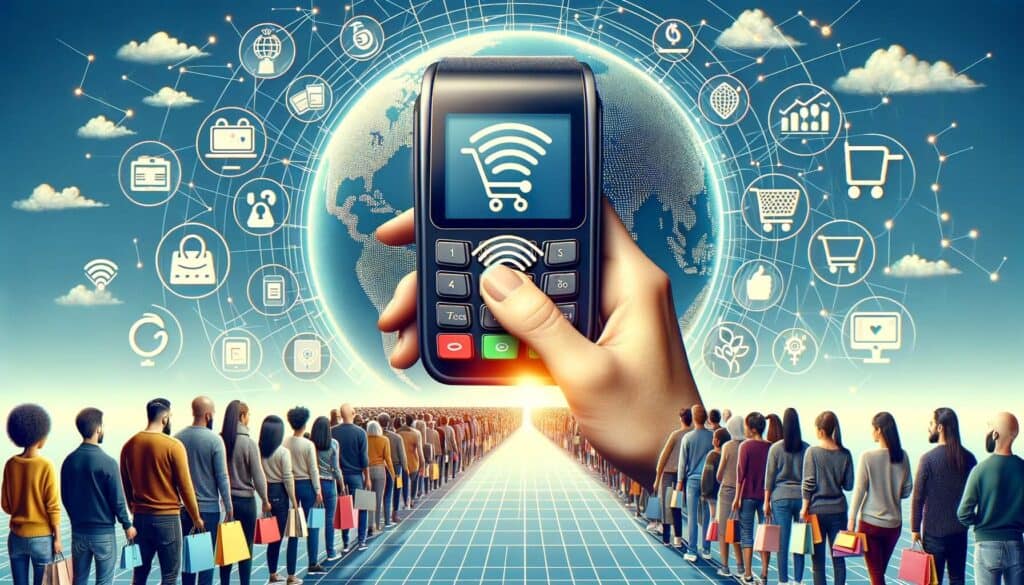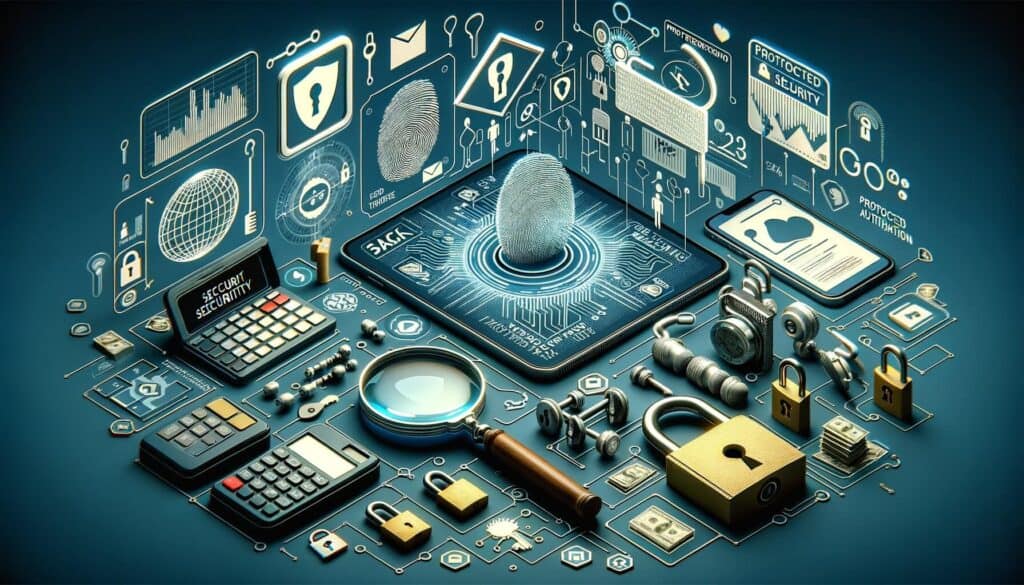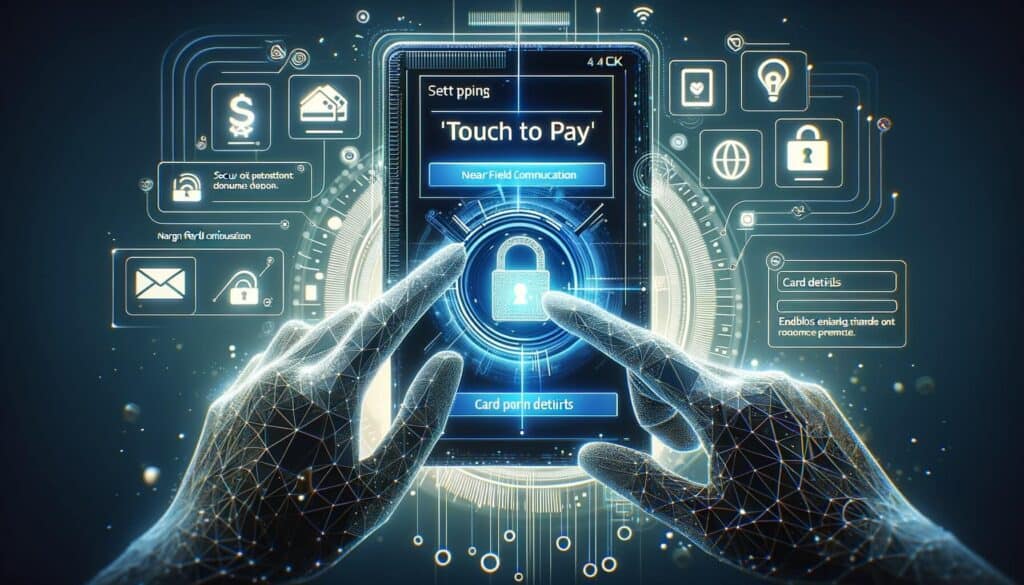
By Carol Peters December 26, 2024
In today’s fast-paced world, convenience is key. With the advent of touch to pay technology, making payments has become easier and more efficient than ever before. Touch to pay, also known as contactless payment, allows users to make transactions by simply tapping their device or card on a payment terminal. This technology has gained immense popularity in recent years, revolutionizing the way we pay for goods and services.
In this article, we will explore the ins and outs of touch-to-pay, including how it works, its benefits, security measures, popular services and providers, setting it up on your device, common issues and troubleshooting, and frequently asked questions.
How Does Touch to Pay Work?
Touch to pay technology utilizes near field communication (NFC) technology to enable seamless transactions. NFC is a short-range wireless communication technology that allows devices to exchange data when they are in close proximity to each other. When a user taps their device or card on a payment terminal, the NFC chip in the device or card communicates with the terminal, transmitting the necessary payment information securely. This process is quick and efficient, eliminating the need for physical contact or swiping of cards.
Benefits of Touch to Pay

The benefits of touch to pay technology are numerous and have contributed to its widespread adoption. Firstly, it offers unparalleled convenience. With touch-to-pay, there is no need to carry around cash or rummage through your wallet for the right card. A simple tap is all it takes to complete a transaction. This not only saves time but also reduces the risk of losing or misplacing your cards.
Secondly, touch to pay is incredibly fast. Traditional payment methods such as cash or card swiping can be time-consuming, especially during peak hours. With touch-to-pay, transactions are completed in a matter of seconds, allowing for a smoother and more efficient checkout process.
Furthermore, touch to pay is highly secure. The technology employs advanced encryption and tokenization techniques to protect sensitive payment information. Unlike traditional magnetic stripe cards, which can be easily cloned or skimmed, touch-to-pay transactions generate unique codes for each transaction, making it virtually impossible for fraudsters to intercept and misuse the data.
Security Measures in Touch to Pay Systems

Touch to pay systems prioritize security to ensure the safety of users’ financial information. One of the key security measures is tokenization. When a touch-to-pay transaction is initiated, the user’s payment information is replaced with a unique token. This token is then transmitted to the payment terminal, ensuring that the actual card details are never exposed. Even if a hacker were to intercept the token, it would be useless without the corresponding encryption key.
Additionally, touch to pay systems employ encryption to protect the transmission of data between the device or card and the payment terminal. Encryption algorithms scramble the data, making it unreadable to anyone without the decryption key. This ensures that even if the data is intercepted, it cannot be deciphered and used maliciously.
Furthermore, touch to pay systems often require authentication before a transaction can be completed. This can be in the form of a PIN, fingerprint, or facial recognition. By adding an extra layer of security, touch-to-pay systems ensure that only authorized users can make payments.
Popular Touch to Pay Services and Providers

Several touch to pay services and providers have emerged in the market, offering users a variety of options to choose from. One of the most well-known touch-to-pay services is Apple Pay. Available on Apple devices, Apple Pay allows users to make payments using their iPhone, Apple Watch, or iPad. It supports a wide range of banks and credit cards, making it accessible to a large user base.
Another popular touch to pay service is Google Pay. Compatible with Android devices, Google Pay offers a similar experience to Apple Pay, allowing users to make payments with their smartphones or smartwatches. It also supports a wide range of banks and credit cards, making it a convenient option for Android users.
Samsung Pay is another prominent touch-to-pay service, specifically designed for Samsung devices. It offers users the ability to make payments using their Samsung smartphones or smartwatches. Samsung Pay stands out from its competitors by supporting both NFC and magnetic stripe technology, allowing users to make payments even on older payment terminals that do not support NFC.
Setting Up Touch to Pay on Your Device

Setting up touch to pay on your device is a straightforward process. The exact steps may vary depending on the service and device you are using, but the general process remains the same. Firstly, you need to ensure that your device supports touch-to-pay technology. Most modern smartphones and smartwatches are equipped with NFC chips, but it is always a good idea to double-check.
Once you have confirmed that your device supports touch to pay, you need to add your payment cards to the respective touch to pay service. This typically involves opening the touch-to-pay app on your device, selecting the option to add a card, and following the on-screen instructions. You may be required to enter your card details manually or scan the card using your device’s camera.
After adding your cards, you may need to verify your identity and set up any additional security measures such as a PIN or fingerprint authentication. Once the setup is complete, you are ready to start making touch-to-pay transactions. Simply unlock your device, hold it near the payment terminal, and follow the prompts on the screen to complete the transaction.
Common Issues and Troubleshooting in Touch to Pay
While touch to pay technology is generally reliable, users may encounter some common issues or glitches. One common issue is a declined transaction. This can occur due to various reasons, such as insufficient funds, an expired card, or a technical error. If your transaction is declined, it is recommended to check your card details, ensure you have sufficient funds, and try again. If the issue persists, contacting your card issuer or touch-to-pay service provider for assistance is advisable.
Another issue users may face is compatibility problems. Not all payment terminals support touch to pay technology, especially older terminals that only accept magnetic stripe cards. In such cases, users can try using the magnetic stripe feature of their touch-to-pay service, if available, or resort to traditional payment methods.
Battery drain is another concern for touch to pay users. Since touch-to-pay relies on NFC technology, it can consume more battery power than usual. To mitigate this issue, users can disable touch to pay when not in use or carry a portable charger to ensure their device has sufficient battery life.
Future Trends and Innovations in Touch to Pay
1. Wearable Integration: As wearable technology continues to evolve, we can expect further integration of touch-to-pay functionality into smartwatches, fitness trackers, and other wearables.
2. Internet of Things (IoT) Integration: With the rise of IoT, we may see Touch to Pay technology being integrated into various everyday objects, such as home appliances, cars, and public transportation systems.
3. Biometric Advancements: Biometric authentication methods, such as iris scanning and voice recognition, may become more prevalent in Touch to Pay systems, enhancing security and user experience.
4. Enhanced Loyalty Programs: Touch to Pay systems can be seamlessly integrated with loyalty programs, allowing users to earn and redeem rewards with a simple tap.
Frequently Asked Questions about Touch to Pay
Q1. Is touch to pay secure?
Answer: Yes, touch-to-pay is secure. It employs advanced encryption and tokenization techniques to protect sensitive payment information. Additionally, authentication measures such as PINs, fingerprints, or facial recognition add an extra layer of security.
Q2. Can I use touch to pay with any card?
Answer: Most touch-to-pay services support a wide range of banks and credit cards. However, it is recommended to check with your card issuer or touch to pay service provider to ensure compatibility.
Q3. What happens if my device is lost or stolen?
Answer: If your device is lost or stolen, you should immediately contact your touch-to-pay service provider to suspend or disable your touch to pay functionality. Additionally, you should report the loss or theft to your card issuer to prevent unauthorized transactions.
Q4. Can I use touch to pay internationally?
Answer: Yes, touch-to-pay can be used internationally in countries where the service is supported. However, it is advisable to check with your touch to pay service provider for specific details and any additional fees that may apply.
Q5. Are there any transaction limits for touch to pay?
Answer: Transaction limits may vary depending on the touch-to-pay service and the card issuer. Some services may have a daily or per-transaction limit, while others may not have any limits. It is recommended to check with your touch to pay service provider or card issuer for specific details.
Conclusion
Touch to pay technology has revolutionized the way we make payments, offering unparalleled convenience, speed, and security. With a simple tap, users can complete transactions in a matter of seconds, eliminating the need for physical contact or swiping of cards. The advanced security measures, such as tokenization, encryption, and authentication, ensure that users’ financial information remains safe and protected.
Popular touch-to-pay services like Apple Pay, Google Pay, and Samsung Pay have made it easier than ever to set up touch-to-pay on your device and start making seamless transactions. While there may be some common issues or glitches, overall, touch-to-pay technology provides a hassle-free and efficient payment experience. As touch to pay continues to evolve and gain popularity, it is expected to become the preferred payment method for consumers worldwide.
